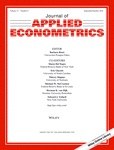
Kole, E. and \van Dijk\, D. (2017). How to identify and forecast bull and bear markets? Journal of Applied Econometrics, 32(1):120--139.
-
Affiliated authorsDick van Dijk, Erik Kole
-
Publication year2017
-
JournalJournal of Applied Econometrics
Because the state of the equity market is latent, several methods have been proposed to identify past and current states of the market and forecast future ones. These methods encompass semi-parametric rule-based methods and parametric Markov switching models. We compare the mean-variance utilities that result when a risk-averse agent uses the predictions of the different methods in an investment decision. Our application of this framework to the S\&P 500 shows that rule-based methods are preferable for (in-sample) identification of the state of the market, but Markov switching models for (out-of-sample) forecasting. In-sample, only the mean return of the market index matters, which rule-based methods exactly capture. Because Markov switching models use both the mean and the variance to infer the state, they produce superior forecasts and lead to significantly better out-of-sample performance than rule-based methods. We conclude that the variance is a crucial ingredient for forecasting the market state. Copyright {\textcopyright} 2016 John Wiley \& Sons, Ltd.